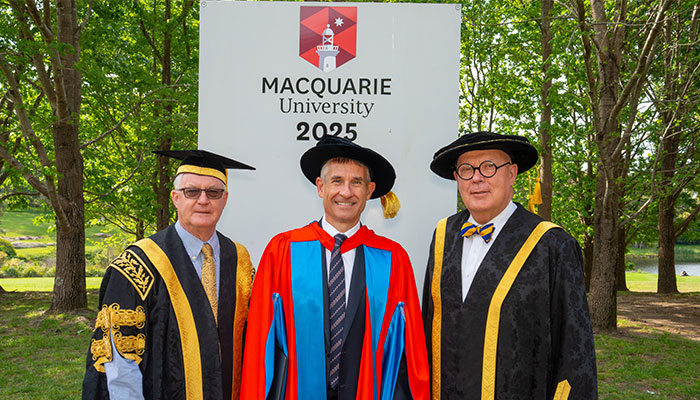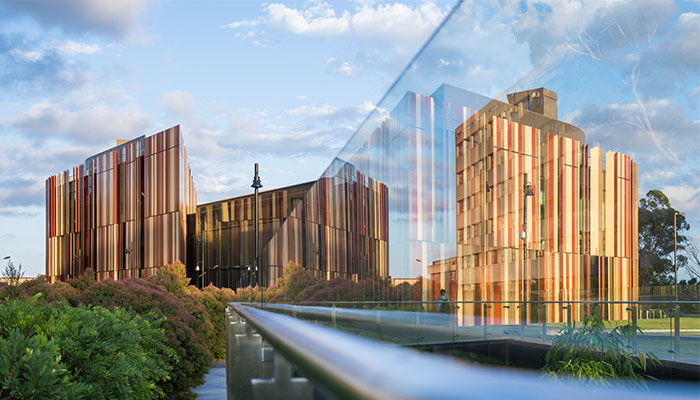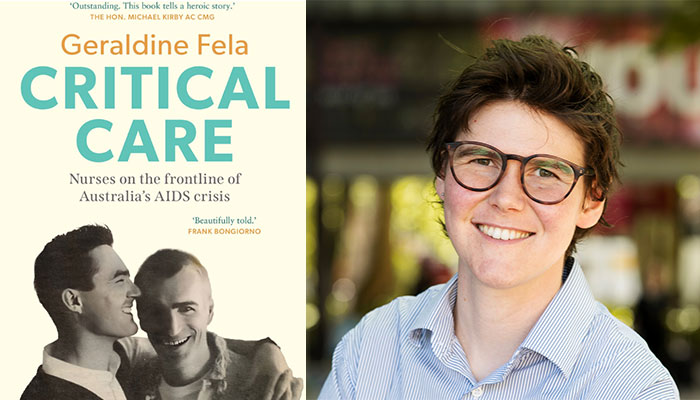They are:
- The Weed Futures project, run by Michelle Leishman and Lesley Hughes, which predicts how Australia’s exotic plants will respond to climate change;
- The National Indigenous Science Education Program (NISEP), coordinated by Joanne Jamie, Ian Jamie and Subramanyam Vemulpad, which places Indigenous secondary students in STEM leadership positions;
- The Blue Carbon Horizons project, led by Neil Saintilan, which reveals why coastal wetlands are an important element of climate change mitigation; and
- Dr Sophie Calabretto, a mathematician who is determined to change the perception that maths is only for very smart people.
“These results are a great illustration of the depth and breadth of the research being done here,” says Dr Barbara Messerle, Executive Dean of the Faculty of Science and Engineering at the university.
“Individually and together the four nominations show that although the work falls in different fields there is a common focus on empowering people, particularly young people, to build informed and sustainable futures.”
This concern is also reflected in the university’s own contribution to the annual prizes – the Macquarie University Eureka Prize for Outstanding Early Career Researcher.
The prize is intended to encourage and support young scientists in the development of successful longer-term projects to ensure the best outcomes for Australian research.
“Our scientists have made significant global impacts across science and engineering,” says Dr Messerle.
“By sponsoring this award, we want to do our bit to ensure that talented early career researchers can feel supported and appreciated here on home soil.”
Last year’s winner was Dr Mohsen Rahmani, from the Australian National University, who developed a new class of nanoscale surfaces for miniaturised consumer devices.
The Eureka Prize winners will be announced at an award ceremony on 28 August at Sydney Town Hall.
More about Macquarie University’s Eureka Prize finalists
Guarding against the weeds of the future
Weed Futures, run by Michelle Leishman and Lesley Hughes, is a finalist for the Eureka Prize for Environmental Research
The Weed Futures project predicts how Australia’s exotic plants will respond to climate change, to help land managers fight the war on weeds. The project means Australia is better placed to manage and protect its biodiversity in a changing climate.
Thanks to this research, the NSW National Parks and Wildlife Service knows it needs to use sniffer dogs to track down and eradicate orange hawkweed before it spreads, the fairy penguins of Montague Island stand a chance against the South African kikuyu grass that kills hundreds of chicks each year, and farmers across Australia can predict what invasive cacti species to guard against.
Weed Futures is also being used by NSW Local Land Services, Royal Botanical Gardens & Domain Trust, Nature Conservation Council of NSW, state and federal government agencies, and suburban and regional local governments. It’s being incorporated into a horticulture industry scheme to help prevent exotic weed invasions. And the broader public is using it as an information resource.
Leishman and Hughes model how hundreds of introduced plant species fare under various climate conditions and combines this with mapped information on ecosystems, species distribution and projections of climate change impacts on habitat.
The project is part of a collaboration between researchers and users led by Professors Michelle Leishman and Lesley Hughes at Macquarie University, working closely with the NSW Office of Environment and Heritage (OEH).
Indigenous science education
The National Indigenous Science Education Program, coordinated by Joanne Jamie, Ian Jamie and Subramanyam Vemulpad, is a finalist for the Eureka Prize for STEM Inclusion
The National Indigenous Science Education Program (NISEP) places Indigenous secondary students from rural, regional and low socioeconomic status areas in STEM leadership positions at school, university and community events.
In the past five years, the program has trained around 800 students from 16 schools to exhibit STEM outreach activities to peers, Elders, community members and the public.
NISEP helps Indigenous students become leaders among their peers and in their communities, and participation results in greater engagement with STEM and greater academic achievement.
The program began when Elders from the northern NSW Yaegl and Bundjalung Indigenous communities asked Macquarie University scientists one question: “Can you help us help our youth?”
After participating in a NISEP event, six in 10 secondary student leaders reported an increased desire to go on to Year 12 or higher education, seven in 10 had an increased interest in science, and nine in 10 found being a leader a good or inspiring experience.
NISEP has established a strong partnership with Charles Sturt University (CSU) Wagga Wagga campus and schools within Wiradjuri country. Over the past five years it has continued to grow to encompass CSU Port Macquarie and Orange, the University of Queensland and 16 partner schools from across Northern NSW, the Riverina, Central Coast NSW and Western Sydney.
Program leaders include Associate Professor Joanne Jamie, Dr Ian Jamie and Associate Professor Subramanyam Vemulpad (from Macquarie University), Dr Ronald Heron (of Yaegl Local Aboriginal Land Council), and Associate Professor Paul Prenzler and Dr Danny Bedgood (both from Charles Sturt University).
Making maths relevant
Sophie Calabretto is a finalist for the Eureka Prize for Promoting Understanding of Science
Dr Sophie Calabretto is a mathematician who is determined to change the perception that maths is only for very smart people. Through extensive public and media engagement, she hopes to help break the stigma that surrounds the discipline, especially for young women.
Now a senior lecturer at Macquarie University, in 2017 Sophie was chosen as one of the ABC’s ‘Top 5 Under 40’ researchers, which gave her a platform to engage with the wider community.
Highlights of her activities include:
- explaining the maths and physics behind some common weather phenomena using fluid mechanics, her area of mathematical expertise;
- creating a popular social media video explaining the equations that govern fluid mechanics;
- making a radio package for the Radio National Science Show on chaos and weather;
- appearing as an expert in two episodes of Catalyst ABC TV;
- and giving a live performance at the Sydney Science Festival about how the random firing of neurons might explain the time intervals between murders committed by a serial killer.
“I find myself frustrated when I hear others try to sell maths because it’s ‘beautiful’ or ‘elegant’,” Sophie says. “We should care about maths because it’s fundamental to our progress. And everyone needs to know that.”
How wetlands bury carbon
Blue Carbon Horizons, led by Neil Saintilan, is finalist for the Eureka Prize for Environmental Research
By studying salt marshes around the world and a collapsed coal mine in New South Wales, the Blue Carbon Horizons team has shown that coastal wetlands are an important element of climate change mitigation, becaue they rapidly absorb and bury carbon from the atmosphere and help to raise the level of coastland as seas rise.
Coastal wetlands such as mangrove, saltmarsh, seagrasses and tidal forests, are the most efficient natural systems at absorbing and burying atmospheric carbon dioxide.
Capturing and storing carbon in these “blue carbon” ecosystems has a dual benefit: it removes carbon dioxide from the atmosphere, and the carbon is used to build up root material that lets the wetland plants keep their heads above the rising waters.
The Blue Carbon Horizons team studied several thousand years of sediment at 345 saltmarshes across six continents and found that where sea levels have risen more quickly, carbon burying has also been more efficient.
To see what might happen in the face of the unprecedented rates of sea level rise expected in coming decades, the team looked at a coal mine closure at Chain Valley Bay in Lake Macquarie in the mid-1980s. When the mine supports were removed, the entire foreshore and wetland subsided, causing an effective sea level rise of a metre in the space of a few years.
The wetland recovered rapidly. Some plants moved inland, and the rate of root accumulation doubled. Further, the buried material contained four times as much organic carbon as it had before the sea levels rose.
The research highlights the importance of preserving wetlands from land clearing and reclamation.
The Blue Carbon Horizons team is made of up Kerrylee Rogers (University of Wollongong), Jeffrey Kelleway (University of Wollongong), Neil Saintilan (Macquarie University), Debashish Mazumder (ANSTO), Atun Zawadzki (ANSTO), Colin Woodroffe (University of Wollongong).



